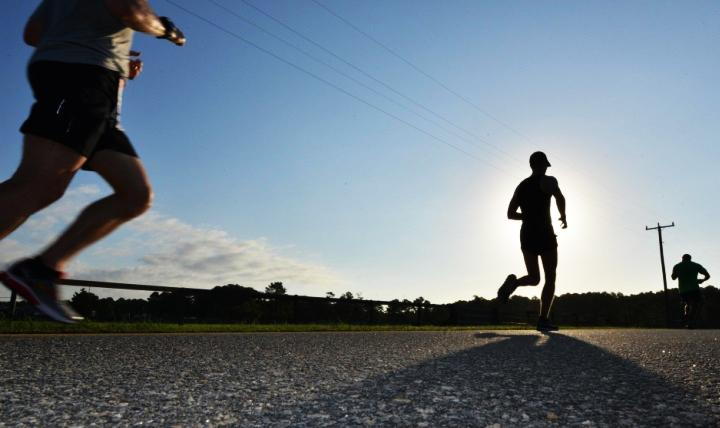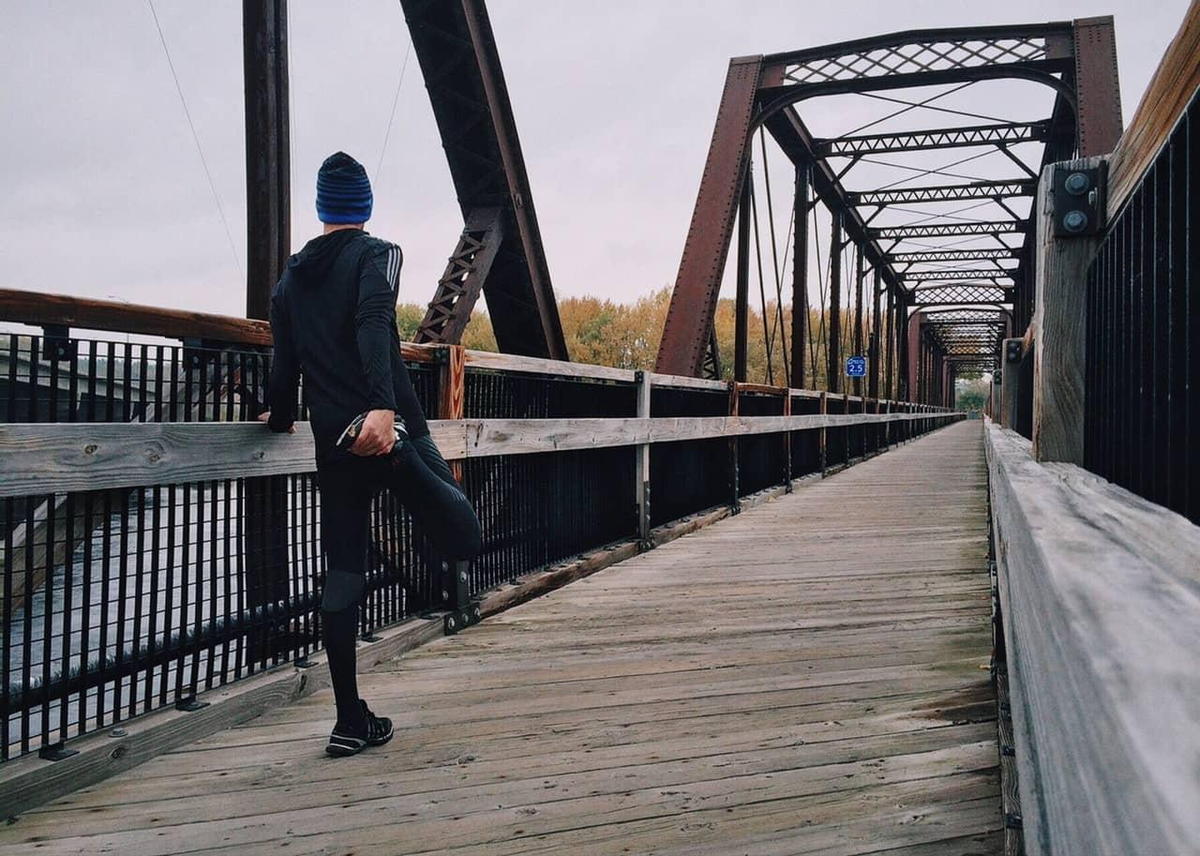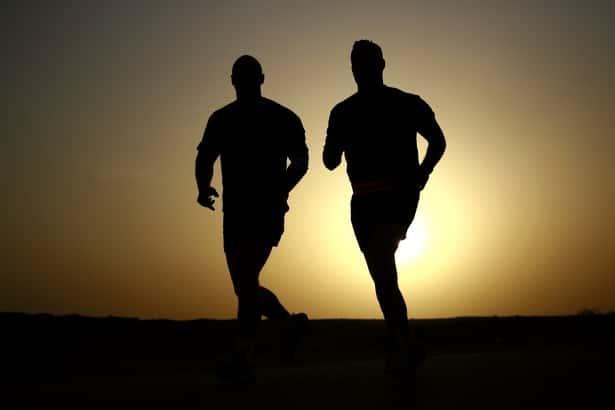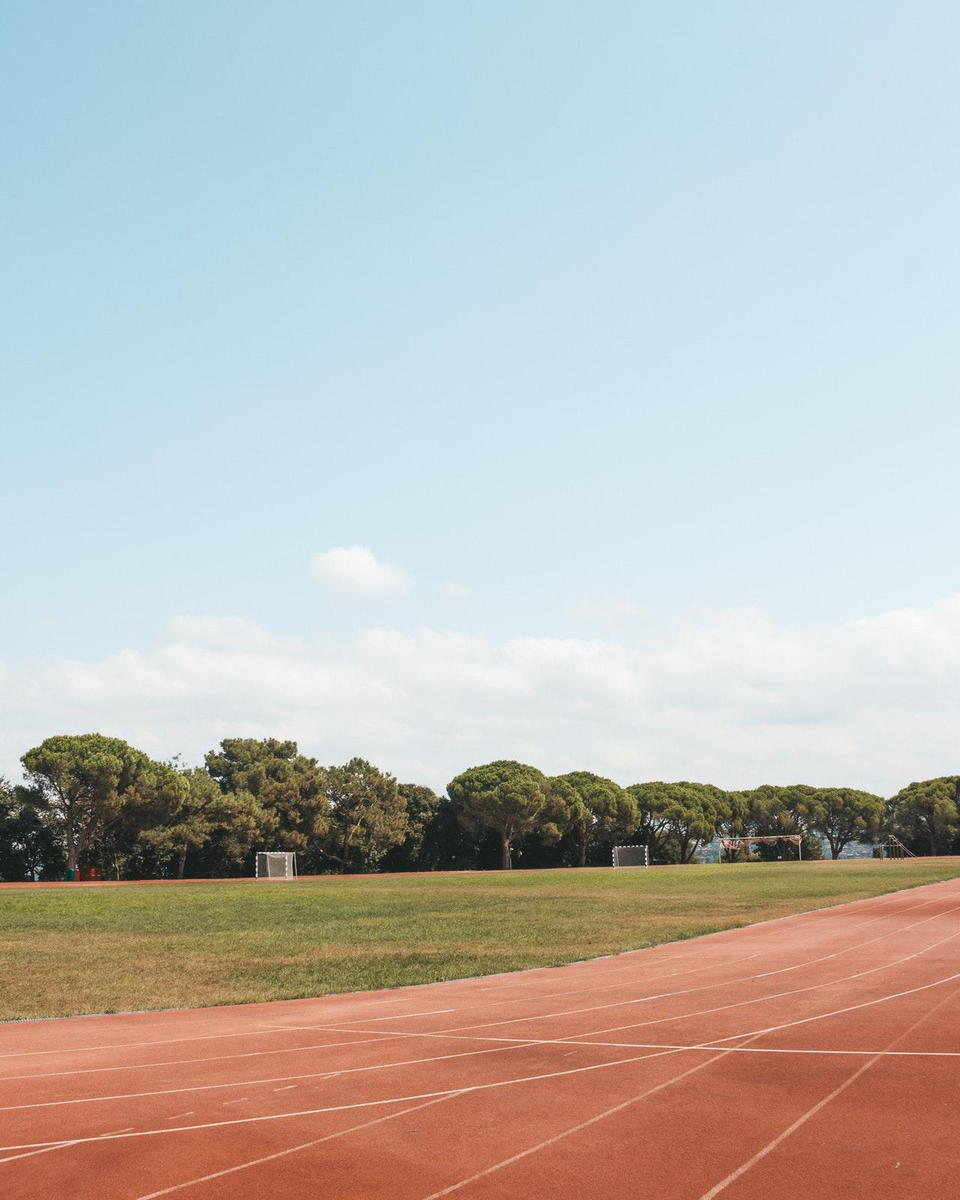
Runners, START YOUR ENGINES!!
Finally... most of the cold, dark, rainy days (especially here in Knoxville) are behind us and we are trading out our winter coats for running gear. The early season races are now upon us and it is time to make up for lost training days during the winter months. This is always a very popular time of year for us at the office as the injuries from training too hard on tissue that is still in hibernation mode are rearing their ugly heads. I wanted to take a few minutes to address one of the most common of these injuries, Shin splints.
What Are Shin Splints?
 Shin splints hold the clinical name of medial tibial stress syndrome (MTSS). This is a fairly accurate name as the most common place that people feel leg pain is deep on the inside of the shin bone. Pain can also be felt on the very front of the leg which is differentiated as an anterior shin splint. The muscles in these different compartments when excessively stressed, often for the first time in a while, can pull on the tibia harder than it is accustomed to and cause deep aching pain. The periosteum, or outer layer of bone that tendons and ligaments attach to, is rich with pain perceiving nociceptors and are quick to transmit that pain signal. This is typically accompanied by inflammation of the muscle, tendon, or in worse cases the actual periosteum itself.
Shin splints hold the clinical name of medial tibial stress syndrome (MTSS). This is a fairly accurate name as the most common place that people feel leg pain is deep on the inside of the shin bone. Pain can also be felt on the very front of the leg which is differentiated as an anterior shin splint. The muscles in these different compartments when excessively stressed, often for the first time in a while, can pull on the tibia harder than it is accustomed to and cause deep aching pain. The periosteum, or outer layer of bone that tendons and ligaments attach to, is rich with pain perceiving nociceptors and are quick to transmit that pain signal. This is typically accompanied by inflammation of the muscle, tendon, or in worse cases the actual periosteum itself.
Shin Splint Pain
The pain often sets in as a dull ache that grows to a throbbing type pain in the inside or front of the leg within 10-15 minutes of exercise. Runners will often be most acutely aware of the pain when running downhill, or for any length of time on a surface that isn’t flat or uphill. It is important to be able to differentiate this pain from other conditions that can be more malicious in nature. Compartment syndrome is a similar condition and is sort of like a shin splint on steroids. Similarly, there is pressure on the bone from the muscle but primarily the pain comes from swollen muscles trapped in the small and enclosed space of the deep compartment of the leg. This can be very dangerous if left untreated as it can destroy the blood vessels and nerves that live near that deep compartment. Stress fractures of the tibia can also present just like shin splints as do some high ankle sprains. The most important thing here is to see a professional if this pain isn’t going away.
What Causes Shin Splints
 Shin splints can be caused by a number of things but the most important place to start is with foot and gait during running. Runners that strike primarily with their heel first are immediately predisposed to this condition. In order to keep your foot from smacking the ground as your heel hits the ground, the muscles of the shin must fire and eccentrically lower the foot to the ground. This puts huge stress on those muscles as well as the periosteum where they attach.
Shin splints can be caused by a number of things but the most important place to start is with foot and gait during running. Runners that strike primarily with their heel first are immediately predisposed to this condition. In order to keep your foot from smacking the ground as your heel hits the ground, the muscles of the shin must fire and eccentrically lower the foot to the ground. This puts huge stress on those muscles as well as the periosteum where they attach.
So now the question is how do we unload those muscles during the gait cycle. Commonly heel striking comes from a “reaching” type of running pattern. This means that the feet are landing far out in front of the body when you run and almost pulling you forward instead of primarily pushing off. Ideally, the foot would land as close to directly underneath the body as possible to shift the load from the rearfoot (or heel) to more of the midfoot and thus more evenly distribute the impact force of landing among all of the muscles of the leg.
How to Alleviate Shin Splint Pain
Ok Matt, got it. Land with my foot underneath my body and avoid shin splints. Easy. Hopefully, it is, but very commonly the reason that you are reaching with that front foot, to begin with, is a restriction at the hip that is shortening the stride. As you shift your weight forward in your stride to make sure to land on the proper area of your foot, the back leg (push off leg) must be able to move farther back behind you into extension. With tight hip flexors at full-blown epidemic status, it’s likely that these are certainly contributing to your lack of hip extension when running. This, in turn, is shifting your center of gravity back and causing you to have to reach with your front leg, thus landing with a mighty thud on your heel and jarring the deep muscles of the leg. The culmination of this, shin splints.
So, here’s some guidance to avoiding these buggers and hopefully staying healthy through this training season. First, ease back into training. We are amazing, adapting machines but our tissues do need time to adjust to the barrage of new stressors that we put on them once the weather is fit. Next, pay attention to the surface you are running on. If you frequently run on a sloped or cambered road, make sure that you run back on the same side so as to stress those muscles evenly on both legs.
Shin Splints and Track Running
 The same thing goes for the track. Be sure to change direction halfway through your workout as always turning one direction will asymmetrically tax those structures the same way. Also, check your hip flexor extensibility. When laying on your back and you pull one knee to your chest, does the other stay on the ground with little to no movement in the low back and hips? If not, STRETCH.
The same thing goes for the track. Be sure to change direction halfway through your workout as always turning one direction will asymmetrically tax those structures the same way. Also, check your hip flexor extensibility. When laying on your back and you pull one knee to your chest, does the other stay on the ground with little to no movement in the low back and hips? If not, STRETCH.
Finally, be cognizant of your gait. Do you feel your feet smacking when you run downhill? Are the heels of your shoes wearing more than the forefoot? Is it hard to shift your center of mass forward to get your feet underneath you as you run? If you answered yes, let us know so that we can pinpoint the exact cause of this and get you running safely and efficiently through the rest of the season.
Shin Splint Treatment in Knoxville
If you are one of our avid runners or just feeling the pain when you run, it's best to consult with those who work day in and day out with Shin Splint Treatment in Knoxville. Our chiropractors are highly skilled at treating athletes and non-athletes alike. All of our patients receive a free consultation. This is so we can determine what your problem is before we begin any sort of treatment by our chiropractors or physical therapists. Call or contact us today!
Happy Trails.
-Dr. Matt
